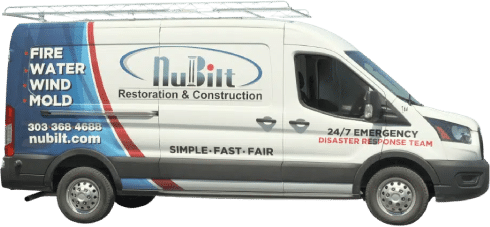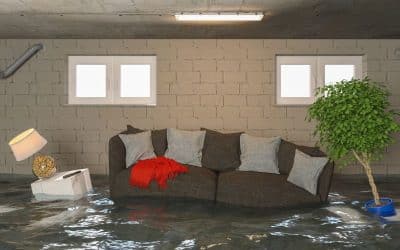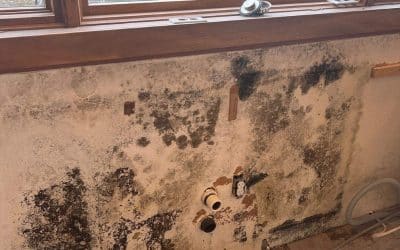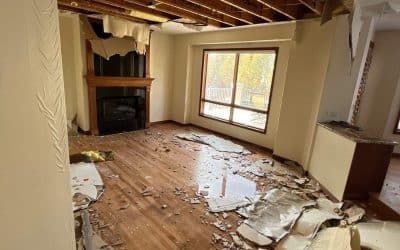Discovering water damage in your home is stressful, but the bigger question is whether your home insurance will cover it. Many homeowners assume that their policy protects them from all types of water-related damage, only to find out later that certain situations—such as gradual leaks, flood-related incidents, or improper maintenance—are often excluded.
Understanding what is covered, what isn’t, and how to properly file a claim can make the difference between a fully covered restoration and a costly out-of-pocket expense. Acting quickly is also critical, as insurance providers often require damage to be reported within a specific timeframe. If you’re searching for water damage restoration near me, choosing a professional company that understands how to navigate the insurance claims process and restore your home correctly is important.
What Water Damage Does Home Insurance Typically Cover?
Most standard homeowners insurance policies cover water damage that is considered sudden and accidental. This means it is likely covered if the damage was unexpected and not due to negligence. Examples of covered water damage include a burst pipe caused by freezing temperatures, a sudden washing machine overflow, or roof leaks resulting from a severe storm. In these cases, the insurance provider usually pays for the necessary repairs, drying, and restoration of the affected areas.
However, not all water damage is covered. Many homeowners are surprised to learn that gradual leaks—such as a slow drip under the sink that causes mold or long-term deterioration—are typically not included in standard policies. Similarly, flood damage from rising water, heavy rainfall, or overflowing bodies of water requires separate flood insurance and is not covered under a typical homeowner’s policy. Sewer backups and sump pump failures may also be excluded unless the homeowner has purchased additional coverage for these specific risks.
Understanding these exclusions is particularly important in areas like Denver, where freezing temperatures can cause pipes to burst and rapid snowmelt can lead to flooding. Homeowners may need to add specific policy riders to ensure full protection against common local water damage risks.
Filing a Claim: Steps to Maximize Your Insurance Payout
Acting fast when dealing with water damage can make all the difference in whether your insurance claim is approved, delayed, or denied. Insurance providers often have strict reporting requirements, and failure to act quickly can lead to a claim rejection or reduced payout.
The first step is to immediately report the damage to your insurance company, typically within 24 to 72 hours of discovery. Some policies include language requiring homeowners to take “reasonable steps” to prevent further damage, which means delaying your report could be considered negligence. After notifying your insurer, the next critical step is to document everything thoroughly. Taking clear photos and videos of the affected areas before any cleanup begins is essential, as this provides evidence of the damage. Keeping records of professional assessments, plumber reports, and any emergency mitigation work can also strengthen your claim.
Beyond documentation, taking immediate action to prevent further damage is crucial. Insurance providers often require homeowners to mitigate additional harm by stopping water intrusion and starting the drying process. Working with a professional restoration company is often the best way to meet this requirement. If you’re looking for water damage restoration nearby, choosing a licensed and reputable team ensures that the cleanup is handled correctly and increases the likelihood of a successful insurance claim.
Why Professional Water Damage Restoration Near Me Matters
Insurance companies prefer claims that are supported by professional damage assessments rather than self-reported estimates. A licensed restoration company can provide official documentation, moisture readings, and structural evaluations that help adjusters determine the full extent of the damage. Additionally, professionals use industry-grade drying equipment, reducing the risk of mold growth—a costly issue that may not be covered if it develops later due to improper cleanup.
Beyond the claims process, hiring professional water damage restoration services ensures that the affected areas are properly dried, cleaned, and repaired. Homeowners who attempt DIY solutions or hire unqualified contractors’ risk improper restoration, leading to hidden structural damage, mold growth, and insurance disputes.
Working with an experienced restoration team also makes it easier to navigate insurance approvals, as they understand the language and requirements of different policies. This can help prevent delays or claim denials that often occur when homeowners try to handle the process alone.
Water damage is one of the most common and expensive issues homeowners face, but not all damage is covered by insurance. Understanding your policy, knowing common exclusions, and acting quickly are all essential to protecting your home and minimizing out-of-pocket costs. Filing a claim within the required timeframe, documenting the damage thoroughly, and working with a professional company that provides water damage restoration nearby can significantly increase the likelihood of insurance approval.
If you’re dealing with unexpected water damage and need expert assistance, don’t wait. For water damage restoration near me, trust professionals who can restore your home and assist with the insurance claims process.
Frequently Asked Questions (FAQs)
Is water damage from a leaking roof covered by home insurance?
It depends on the cause. If the roof leak is due to sudden storm damage, most policies will cover the repairs and resulting water damage. However, if the leak is due to neglect or lack of maintenance, the claim is likely to be denied.
How quickly must I report water damage to my insurance company?
Most policies require homeowners to report water damage as soon as possible, typically within 24 to 72 hours. Failing to do so can result in reduced coverage or a denied claim.
Will insurance cover professional water damage cleanup if I already started drying out the area?
Yes, as long as you haven’t caused further damage. Insurance providers often require homeowners to take reasonable steps to prevent further damage, which includes drying out the area. However, professional restoration is still recommended to ensure thorough cleanup and proper documentation for your claim.
Does homeowners insurance cover mold caused by water damage?
Mold coverage depends on the source of the water damage. If the mold results from a covered event, such as a burst pipe, your policy may include limited mold remediation coverage. However, if the mold results from slow leaks or poor maintenance, it is typically excluded.
What’s the difference between water damage coverage and flood insurance?
Homeowners insurance covers water damage from internal sources like burst pipes or appliance failures, while flood insurance covers damage caused by rising water from outside. If water touches the ground before entering your home, it is usually classified as a flood and requires a separate policy.






